
I started out in photography back in the days when there was no such thing as autofocus. If I focused a lens at the wrong distance, it was my fault, pure and simple. Nowadays, most of us rely almost exclusively on autofocus. That’s all well and good if an autofocus system is consistently accurate but, sadly, that’s often not the case. For interchangeable lens cameras, you’re relying on the electronics and mechanics of both the camera and any attached lens to play nicely together and work in complete harmony. They might not.
Autofocus inaccuracy is more of a problem with DSLRs, which have separate autofocus modules and image sensors, in physically different places. That gives more room for error, compared with mirrorless cameras in which autofocus is based on the actual image sensor itself. Even with mirrorless cameras, there can be room for improvement, especially when using DSLR-style lenses via a mount adapter. A bit of fine-tuning or ‘micro-adjustment’ can pay dividends.
The Spyder LensCal is aimed predominantly at DSLRs but can also come in useful for the likes of Nikon Z system mirrorless cameras, which feature AF fine-tuning, and for Sony Alpha mirrorless cameras that enable fine-tuning for lenses that are attached via a mount adapter. It’s designed by datacolor, a company that’s held in high regard for making some of the best monitor calibrators and the best photo editing tools and accessories.
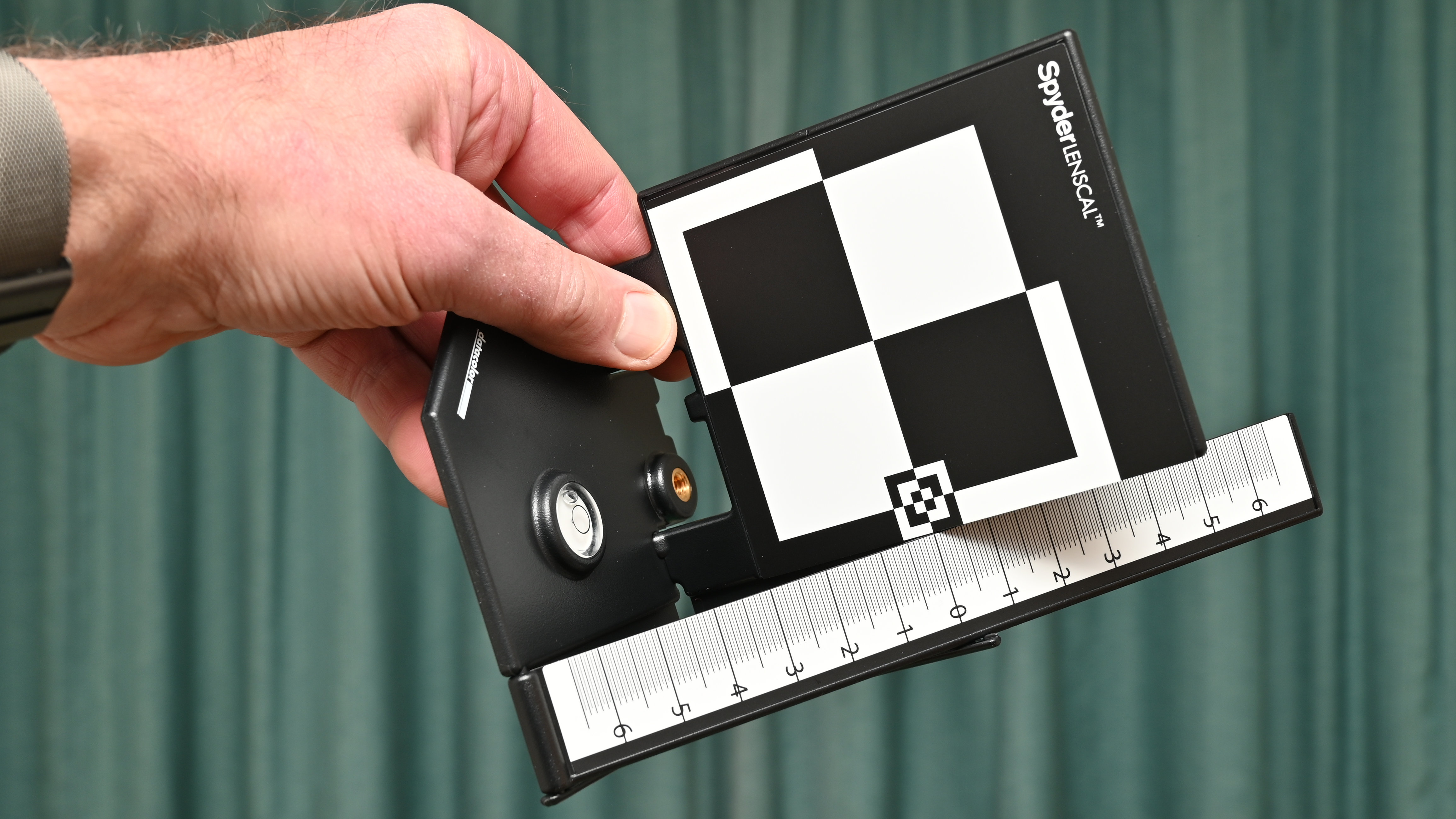
datacolor Spyder LensCal: Specifications
datacolor Spyder LensCal: Price & Availability
The Spyder LensCal is available from various photographic retailers and online stores, as well as from datacolor’s own website. It costs around $69 / £49 / AU$129, which is naturally a lot more expensive than downloading free printable charts that you’ll find on the Internet. Even so, it seems a fair price for a well-made calibration tool that can be used with multiple cameras and lenses.
datacolor Spyder LensCal: Design & Handling
I like the design of the Spyder LensCal. Although it’s made primarily from plastic, the plastic has a high-quality feel and the overall construction feels like it’s built to last. I also like that it folds flat for easy storage, taking up very little space, but snaps into operating configuration in just a couple of seconds, clipping into place.

When set up for use, the device consists of a flat base plate, a vertical focusing chart, and a calibrated scale that’s fixed at a 45-degree angle. Everything needs to be on the level for operation, so the base plate helpfully includes a bubble level. There’s also a brass tripod socket with a standard ¼-inch thread, so you can attach the device to any tripod head or other camera support. For leveling the camera during calibration, it can be useful to use a virtual horizon if featured, or a hotshoe-mounting bubble level (sold separately).
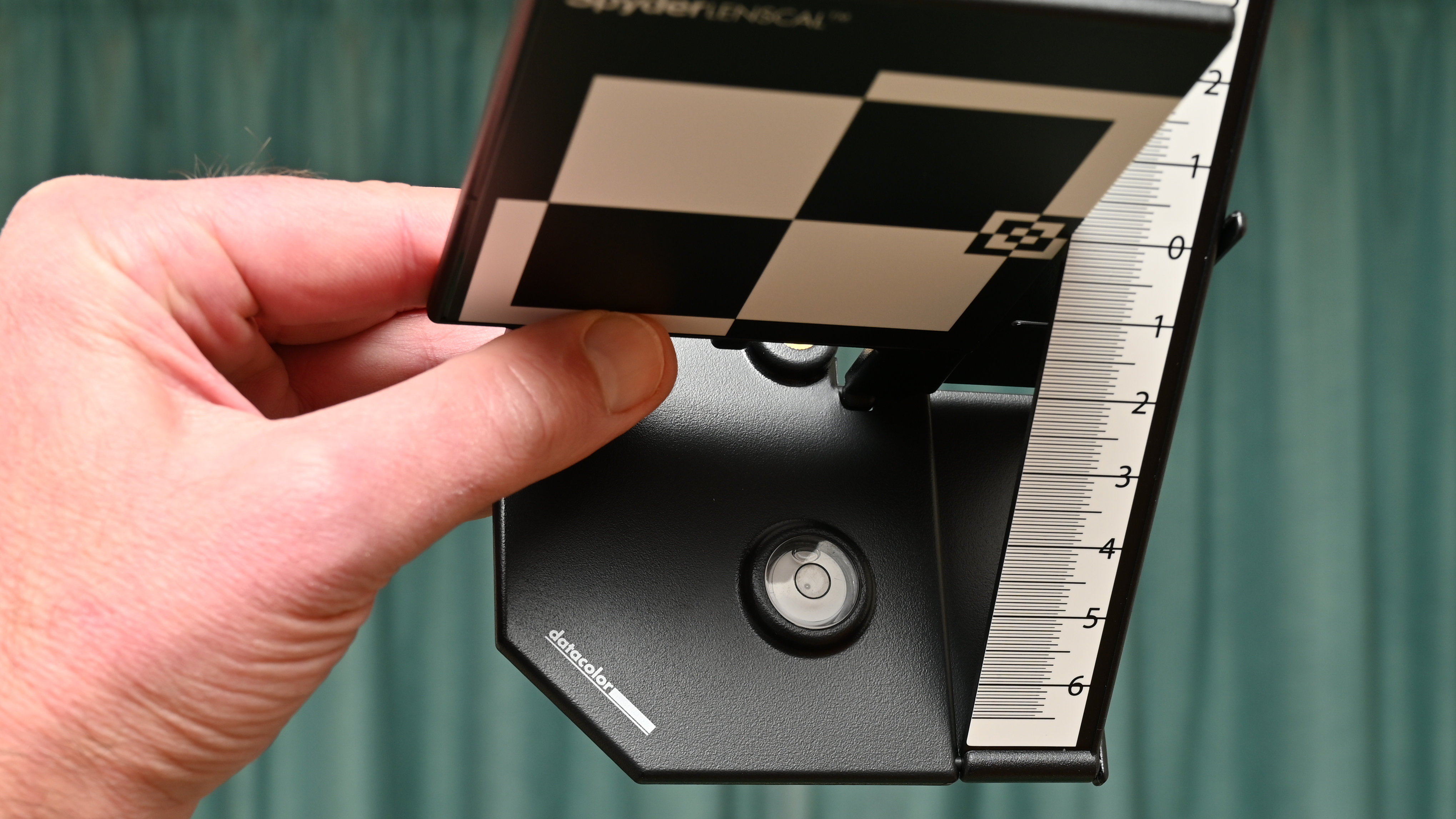
The upright focusing chart has a high-contrast pattern with a small area on the right hand side with a more intricate grid. The idea is that you use the single, central AF point mode in your camera and align it to this part of the chart, which is just adjacent to the calibration scale. The scale is marked with a line at ‘0’, which is at exactly the same distance as the focus point. Sloping forwards and backward from this point, the scale is marked with fine lines and major intervals marked from 1 to 6. This enables you to check if your camera and lens combination is front-focusing (in front of the ideal point) or back-focusing (behind the ideal point).

Operating instructions that come with the Spyder LensCal are, to be honest, completely inadequate. They’re very scant, printed on a card in the retail pack. Pull out the card, however, and you’ll find a link to datacolor’s product page that includes a free User Guide and Quick Start Guide, which you can download in PDF format, as well as a demonstration video. These give you all the information you need, and the guides are clear and easy to understand.
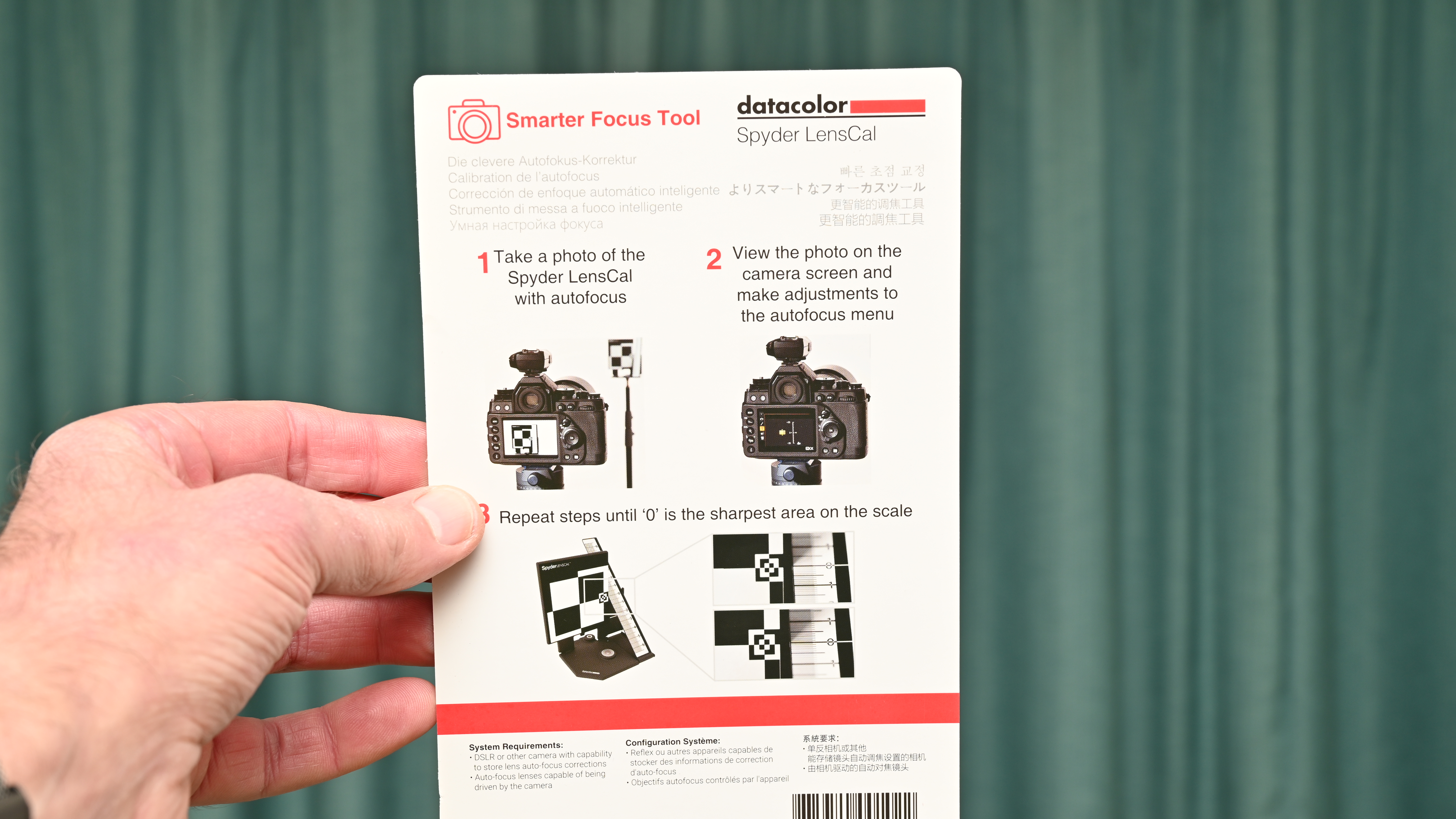
datacolor Spyder LensCal: Photo Performance
Autofocus fine-tuning can be a moveable feast with many vagaries to contend with. If fine-tuning is needed at all, it might require different amounts of adjustment at different focus distances, and that’s just for prime lenses. For zoom lenses, the amount of adjustment can also vary at different focal lengths. I tested the Spyder LensCal with both a Nikon D7100 DSLR and a Nikon Z 6II mirrorless camera, both of which enable AF fine-tune adjustments.
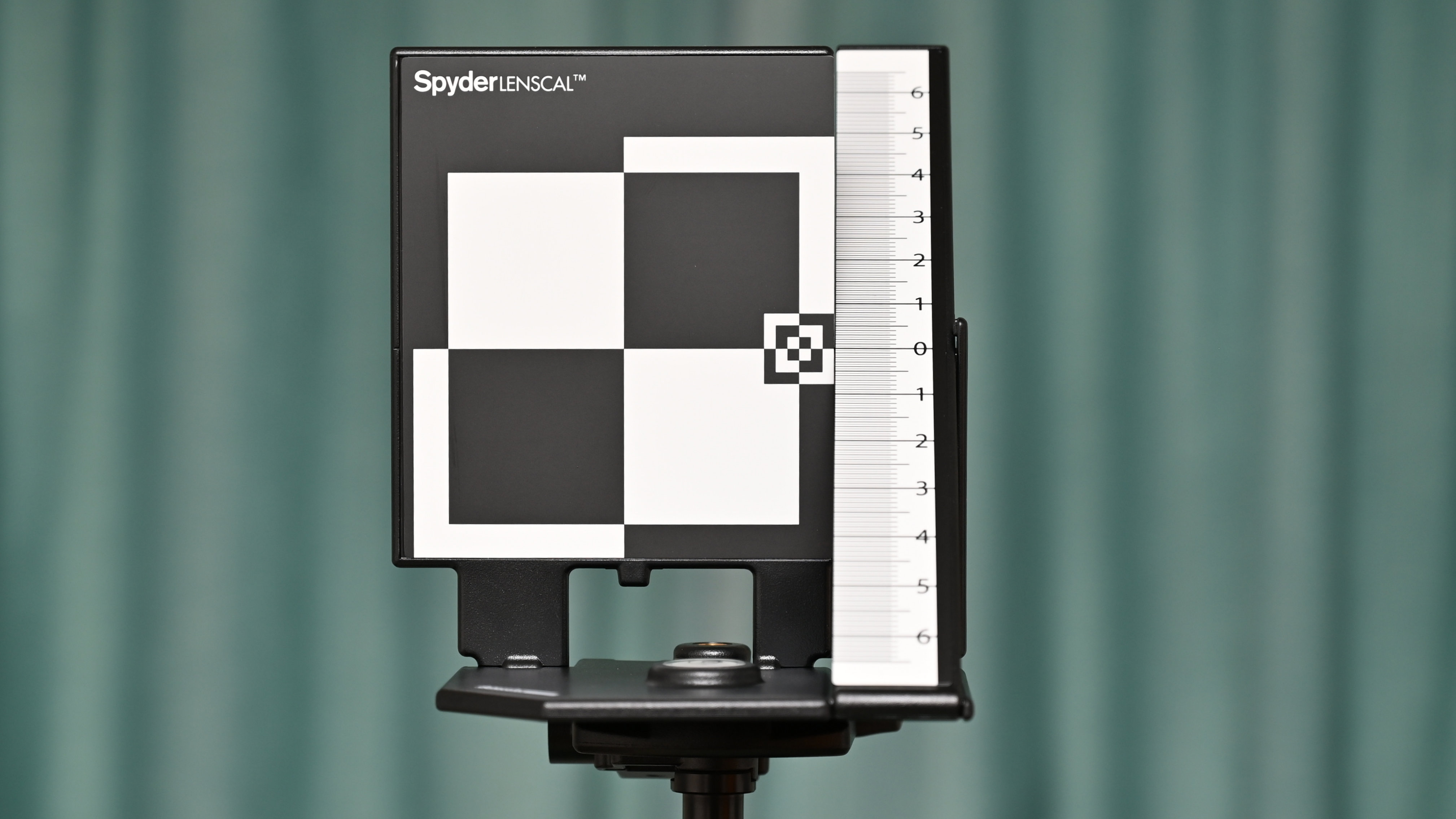
It's often said that you should fine-tune lenses at the focus distance you most often use. Naturally, that can vary considerably from shot to shot. The recommendation from datacolor is that you should set the operating distance at 30-50 times the focal length of the lens. So, for example, the test distance should be 105-175cm for a 35mm lens. For zoom lenses, it’s best to use the longest focal length, if the camera only allows you to make one fine-tuning adjustment. That said, some cameras enable you to make separate adjustments for the shortest and longest focal lengths of a zoom lens. The Sigma USB Dock that’s available for its Global Vision line-up of lenses goes a step further, allowing for individual fine-tuning adjustments at various focus distances as well as zoom settings.
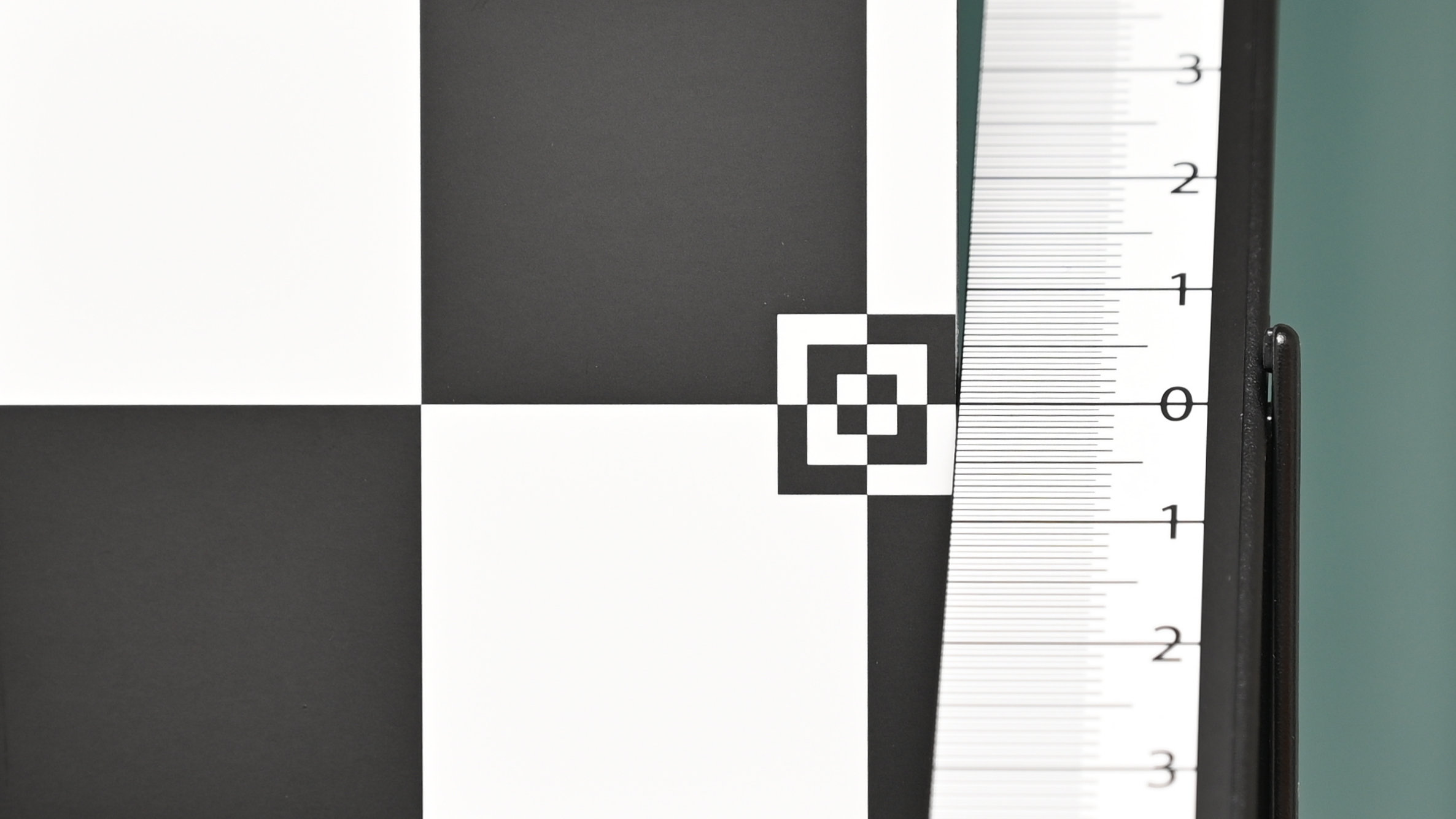
It’s important to use good lighting, a low ISO setting, and the widest available aperture when testing. This enables high-resolution results that make the actual focus distance on the scale easier to read while minimizing the depth of field so you can be more exact. It’s also best to mount your camera on a tripod and use a self-timer to avoid any camera shake.

After you’ve taken a test shot, you can review the results in playback mode, using maximum magnification to see where the focus position is. For the utmost accuracy, it can be better to download shots to your computer and view them on-screen in a larger format. The lines on the calibration scale aren’t intended to correspond to numerical adjustments in the camera’s incremental settings, so a little trial and error is required to tune out any front-focus or back-focus problems.

If you find that you’re having to set pretty much the same fine-tuning adjustment for a camera with all your lenses, it’s likely that the camera itself is the culprit. If this is the case, there’s generally an option in the camera menu to set a default amount, or to ‘adjust all lenses by the same amount’. Because the amount of adjustment might need to be different for individual lenses, and might also need to be different when using the same lens on different camera bodies, it’s usually best to make precise fine-tuning adjustments for each of your lenses on each of your cameras, if you own more than one. And naturally, you only need to make any fine-tuning adjustments if they’re actually needed.
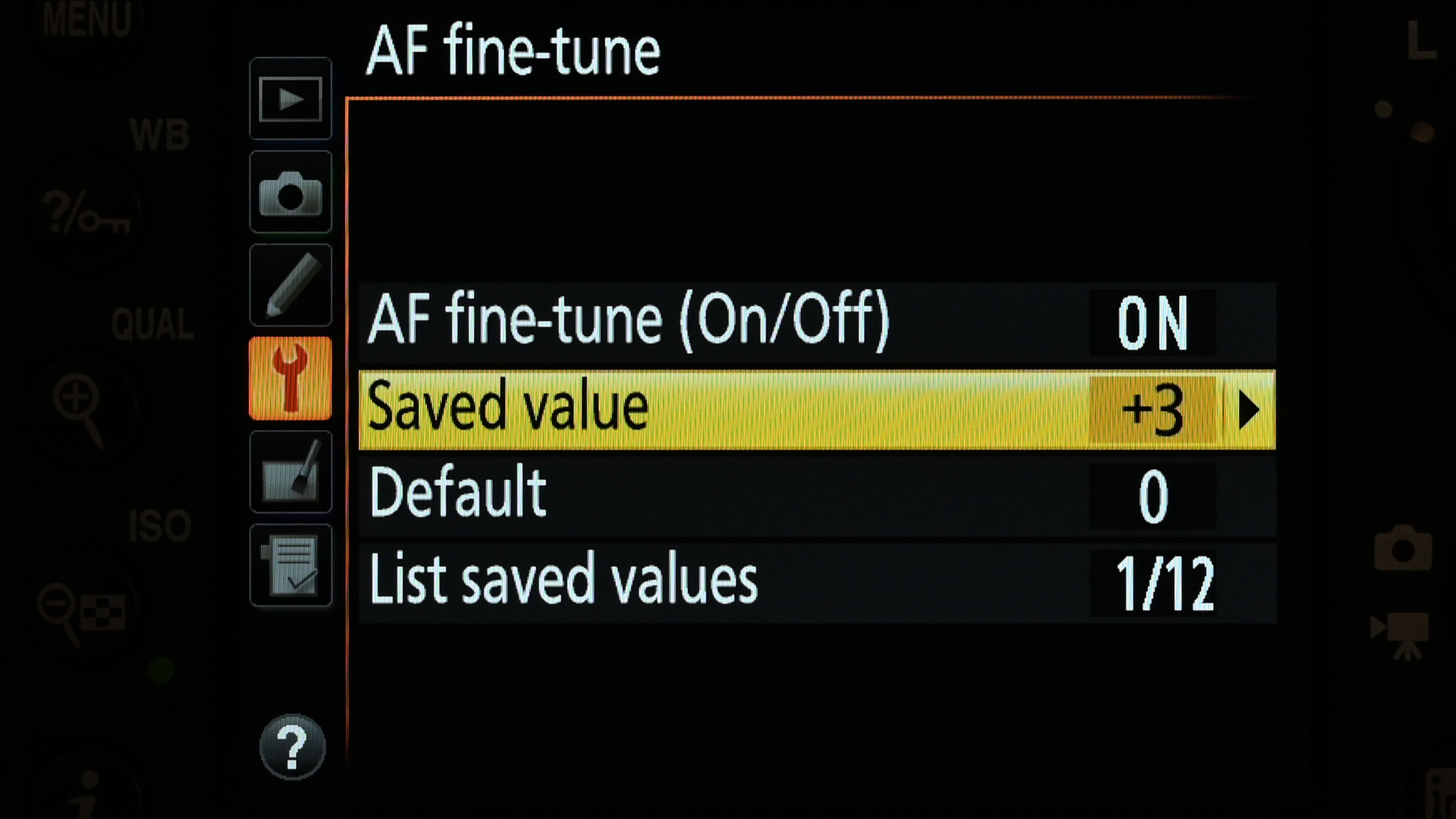
Ultimately, the Spyder LensCal might be a gadget that you simply don’t need. Especially if you use a mirrorless camera with native mount lenses, you might find that everything just ‘works’. However, if you shoot with a DSLR or use lenses on a mirrorless camera via a mount adapter, and you notice consistent autofocus inaccuracies, this tool can help you put things right.
datacolor Spyder LensCal: Verdict
I’ve had lenses that deliver very good image quality, except that on my camera, the critical point of autofocus is usually in the wrong place. Where featured in the camera, autofocus fine-tuning can fix the problem and the datacolor Spyder LensCal is a tool that makes the whole process of calibration relatively quick, easy, and painless. In my books, that makes it a gadget that’s well worth having and very good value at the price.

Should you buy the datacolor Spyder LensCal?
✅ Buy this...
- You suffer consistently inaccurate autofocus
- You like to get optimum autofocus performance
- Your camera enables AF fine-tuning adjustments
🚫 Don't buy this...
- You’re happy with your kit’s AF performance
- You’d prefer using a free test chart
- You don’t like tinkering with your camera settings







